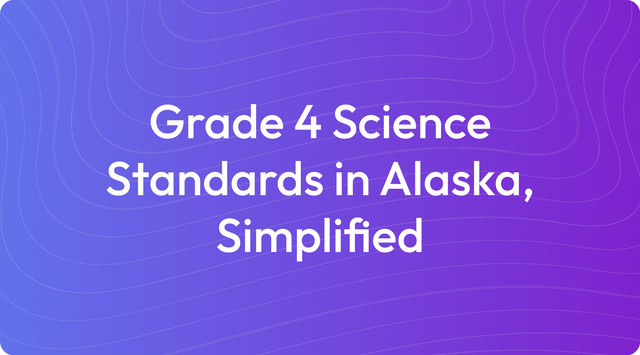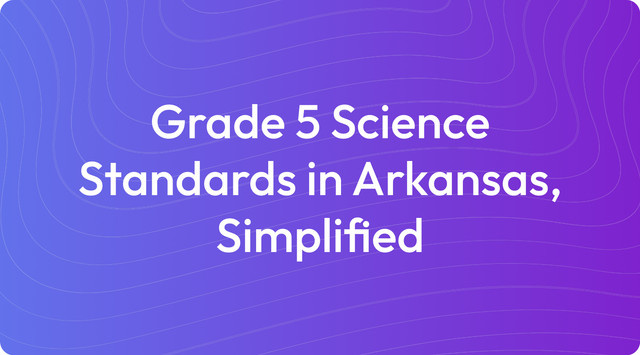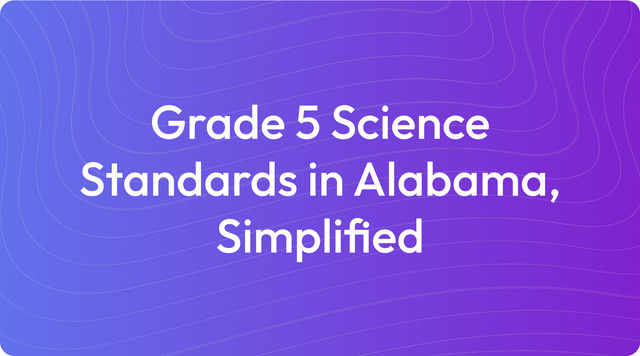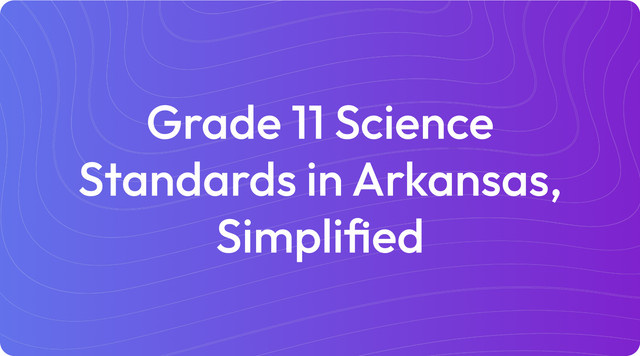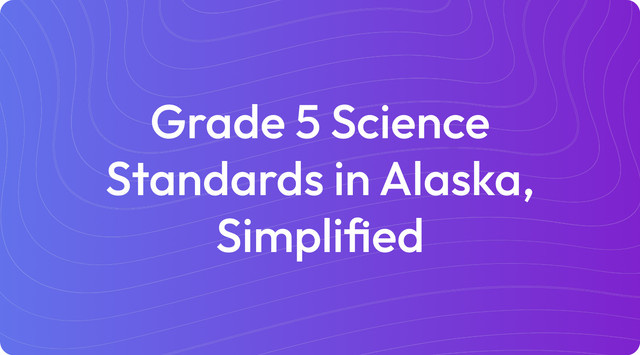Grade 3 Science Standards in California, Simplified
Grade 3 science in California covers forces, weather, and living things. Understand the standards—read more on TeachShare!
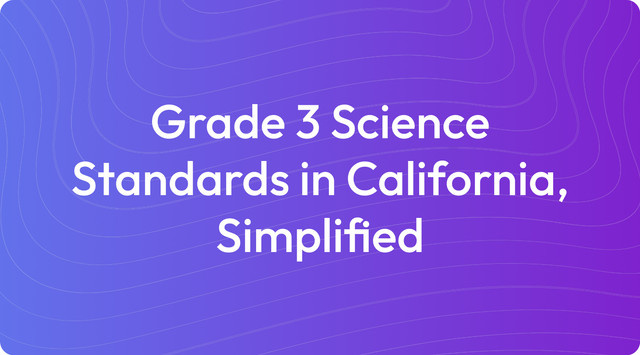
We understand that working with state standards can be a significant undertaking, as the official documents are often dense and complex. To help with this, we've created simplified guides for specific grade levels and subjects. Our goal is to provide you with a clear and accessible overview to support your planning and instruction.
Education standards are learning goals that outline what students are expected to know and be able to do at each grade level. They provide a framework for your curriculum but do not dictate how you should teach, giving you the autonomy to design your lessons. For instance, our simplified guide to California's Grade 3 Science Standards breaks down broad expectations into specific topics like Forces and Interactions or Life Cycles.
What Are Grade 3 Science Standards in California?
The Grade 3 Science Standards in California are built upon the California Next Generation Science Standards (CA NGSS). These standards are designed to help your students connect with science through hands-on exploration and real-world examples. Here are the key areas of focus for third grade:
Physical Science (PS): Forces and Interactions
PS2: Motion and Stability
Key Standard (3-PS2-1): Plan and conduct investigations to determine the effects of balanced and unbalanced forces on the motion of an object.
Key Standard (3-PS2-2): Make observations and measurements to explain that objects in motion stay in motion unless acted upon by a force.
Key Standard (3-PS2-3): Ask questions to determine cause-and-effect relationships of forces, such as magnets attracting or repelling each other.
Key Standard (3-PS2-4): Define a simple problem that can be solved by applying knowledge of forces, such as designing a solution to stop or start motion.
Life Science (LS): Interdependence of Organisms
LS1: From Molecules to Organisms
Key Standard (3-LS1-1): Develop models to describe how animals and plants have unique life cycles (e.g., birth, growth, reproduction, death).
LS3: Heredity
Key Standard (3-LS3-1): Analyze and interpret data to provide evidence that plants and animals inherit traits from their parents.
Key Standard (3-LS3-2): Use evidence to explain how individuals of the same species have variations that help them survive.
LS4: Biological Evolution
Key Standard (3-LS4-2): Use evidence to explain how variations in traits in a population help some organisms survive better in their environment.
Key Standard (3-LS4-3): Construct an argument with evidence about how changes in an environment can affect the survival of organisms.
Key Standard (3-LS4-4): Make a claim about how humans can protect endangered species and their environments.
Earth and Space Science (ESS): Weather and Climate
ESS2: Earth’s Systems
Key Standard (3-ESS2-1): Represent data in tables and graphs to describe typical weather conditions in different regions during a specific time of year.
Key Standard (3-ESS2-2): Obtain and combine information to describe climates in different regions of the world.
ESS3: Earth and Human Activity
Key Standard (3-ESS3-1): Make a claim about how natural disasters (like floods, earthquakes, or wildfires) impact humans and how communities can reduce their effects.
Engineering, Technology, and Applications of Science (ETS): Problem Solving
ETS1: Engineering Design
Key Standard (3-5-ETS1-1): Define a problem that can be solved through engineering and design a solution (e.g., building structures to withstand earthquakes or redirect floodwaters).
Key Standard (3-5-ETS1-2): Generate and compare solutions based on criteria (e.g., cost, effectiveness).
The framework for these standards is guided by the official state and national guidelines.
Key Tested Standards
The California Next Generation Science Standards (CA NGSS) for third grade focus on foundational concepts across Physical, Life, and Earth and Space Science, as well as Engineering. Key tested standards emphasize hands-on investigations, data interpretation, and evidence-based reasoning, preparing students to think and act like scientists.
1. Physical Science (PS): Forces and Interactions
3-PS2-1: Effects of Forces: Plan and conduct investigations to determine the effects of balanced and unbalanced forces on the motion of an object.
3-PS2-2: Motion and Forces: Observe and measure how objects in motion stay in motion unless acted upon by a force (Newton’s First Law).
3-PS2-3: Magnetic Forces: Ask questions to determine cause-and-effect relationships of electric or magnetic interactions.
3-PS2-4: Engineering with Forces: Define a simple problem that can be solved by applying knowledge of forces.
2. Life Science (LS): Interdependence and Adaptation
3-LS1-1: Life Cycles: Develop models to describe how animals and plants have unique and similar life cycles.
3-LS3-1: Inherited Traits: Analyze data to show how plants and animals inherit traits from their parents.
3-LS3-2: Variation in Traits: Use evidence to explain how individuals of the same species show variation and how this helps them survive.
3-LS4-3: Environmental Changes: Construct an argument with evidence about how changes in an environment affect organisms’ survival.
3. Earth and Space Science (ESS): Weather and Natural Hazards
3-ESS2-1: Weather Patterns: Represent data in tables and graphs to describe typical weather conditions in a region during a specific time of year.
3-ESS2-2: Climate Patterns: Obtain and combine information to describe climates in different regions of the world.
3-ESS3-1: Natural Hazards: Make a claim about how natural hazards impact humans and how communities can reduce their effects.
4. Engineering, Technology, and Applications of Science (ETS): Problem Solving
3-5-ETS1-1: Define and Solve Problems: Define a problem that can be solved through engineering.
Key Crosscutting Concepts (CCCs):
Cause and Effect: Understanding how forces cause motion or how environmental changes impact survival.
Patterns: Observing patterns in weather, life cycles, and motion.
Systems and Models: Using models to represent ecosystems, forces, or weather systems.
Why These Standards Are Key for Testing:
Students are evaluated on their ability to:
Conduct investigations and collect data
Use models to explain phenomena
Analyze cause-and-effect relationships
Construct evidence-based explanations for natural events or solutions to problems
The information for these standards is based on the following official resources:
Example Learning Objectives for Unit Planning
Learning objectives translate broad standards into specific, measurable goals for your students. They clarify what students should know and be able to do by the end of a lesson, which helps guide your instruction and assessments.
Here are examples of learning objectives for two Grade 3 Science standards in California. These objectives are written in student-friendly language and aligned to the NGSS three-dimensional learning approach:
Standard: 3-PS2-1
(Plan and conduct investigations to determine the effects of balanced and unbalanced forces on the motion of an object.)
Learning Objectives:
I can explain what balanced and unbalanced forces are and how they affect the motion of an object.
I can conduct an investigation to show how pushing or pulling an object changes its motion.
I can record and analyze data (e.g., how far a toy car travels) to determine how forces cause objects to speed up, slow down, or stop.
I can describe examples of balanced and unbalanced forces in real life, like tug-of-war or a ball rolling on a flat surface.
Standard: 3-LS3-1
(Analyze and interpret data to provide evidence that plants and animals inherit traits from their parents.)
Learning Objectives:
I can observe and identify traits that animals and plants inherit from their parents, like fur color or leaf shape.
I can compare traits of parent and offspring plants or animals using pictures, models, or videos.
I can explain that inherited traits help plants and animals survive in their environment.
I can use evidence, like pictures or charts, to show similarities and differences between parents and offspring.
Key Changes & Updates
The most significant update to California's Grade 3 Science Standards came with the 2013 adoption of the California Next Generation Science Standards (CA NGSS). This change marked a shift away from memorizing facts and toward hands-on exploration and critical thinking. The framework is built on "three-dimensional learning," which combines what students do (Science and Engineering Practices), how they think (Crosscutting Concepts), and what they know (Disciplinary Core Ideas). This approach helps students connect scientific concepts to real-world situations, making learning more meaningful and relevant to their lives.
Practically, these updates mean you will see a greater focus on engineering and design, where students are asked to identify problems and create solutions. The standards also encourage integration with other subjects, as students will use math to analyze data and literacy skills to communicate their findings. A key part of this new approach is the emphasis on using evidence to construct arguments and explain scientific ideas, preparing students to think and reason like scientists from an early age.
Create with TeachShare
We know that translating these detailed standards into ready-to-use lesson plans and activities takes a lot of time and effort. Our platform is built to support you by making it simple to generate high-quality, differentiated materials that align directly with the CA NGSS. This lets you spend less time on prep and more time with your students. Start creating standards-aligned instructional resources with TeachShare now.
Frequently Asked Questions
What are the core science topics for third graders in California?
The curriculum is built around three main areas. In Physical Science, students explore forces, motion, and magnetism. Life Science covers life cycles, inherited traits, and how living things adapt to their surroundings. For Earth and Space Science, the focus is on weather, climate, and finding solutions to natural hazards. Engineering and problem-solving are also woven throughout these topics.
How have the science standards for Grade 3 changed?
The updated standards introduce a more hands-on approach. Learning now combines core science ideas with scientific practices and overarching concepts. This means students are actively conducting experiments, analyzing data, and connecting what they learn to everyday phenomena, like understanding weather patterns or the forces that make a toy car move.
What does an NGSS-aligned activity look like in the classroom?
These activities are designed to be interactive and investigative. Here are a few examples:
- Investigating how pushes and pulls affect an object’s motion, perhaps by rolling toy cars on different surfaces
- Comparing the traits of plants or animals with their parents, like fur color or leaf shape
- Collecting and graphing local weather data to find patterns over time
- Designing and building a small structure that could lessen the impact of a flood
How are students evaluated under these science standards?
Assessment moves beyond traditional tests and focuses on what students can do. Teachers can evaluate learning through:
- Hands-On Investigations: Observing students as they conduct experiments and record their findings.
- Models: Asking students to create diagrams or physical models to explain concepts like life cycles.
- Data Analysis: Reviewing how students record and interpret data from their experiments.
- Explanations: Listening to or reading students’ evidence-based arguments for scientific occurrences.
Why is engineering now part of the third-grade science curriculum?
Including engineering helps students develop critical thinking and problem-solving skills. It shows them how scientific knowledge is used to create practical solutions for real-world challenges. By designing and testing their own solutions, like building a structure to withstand a simulated earthquake, students learn to apply science in a meaningful way.
Answer


